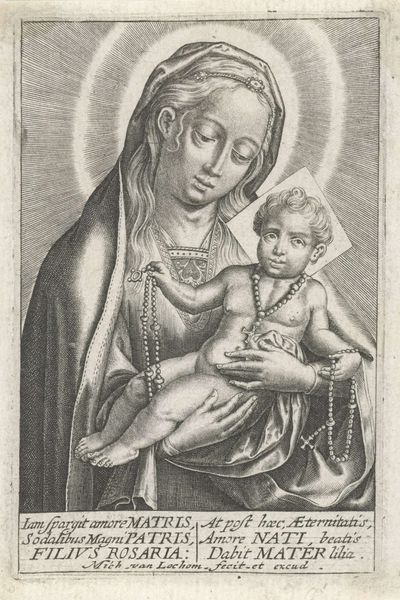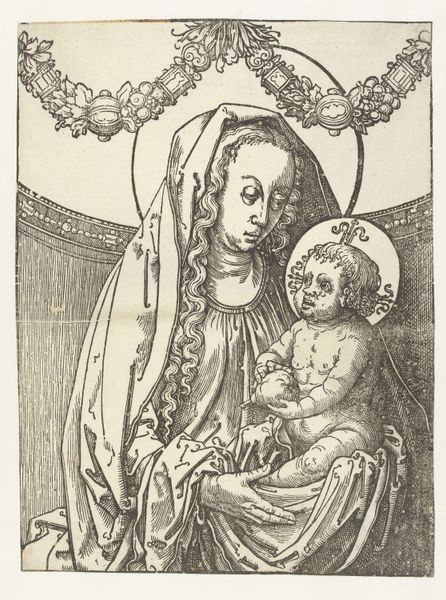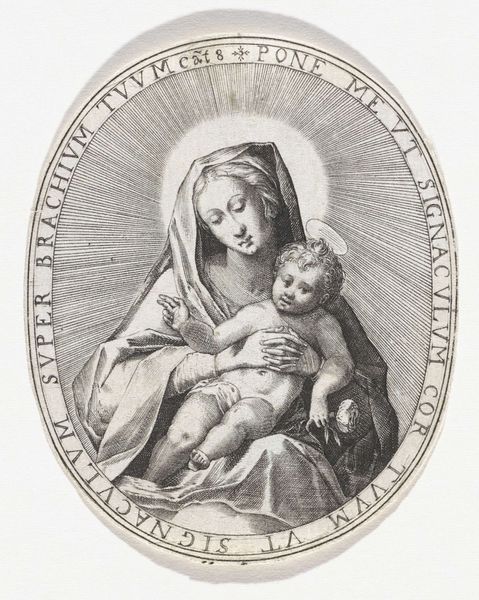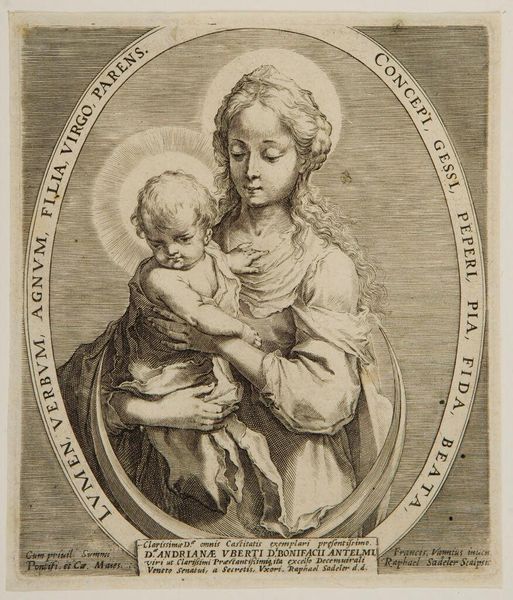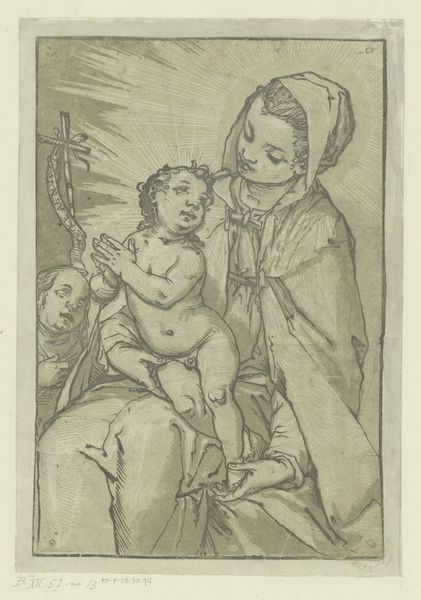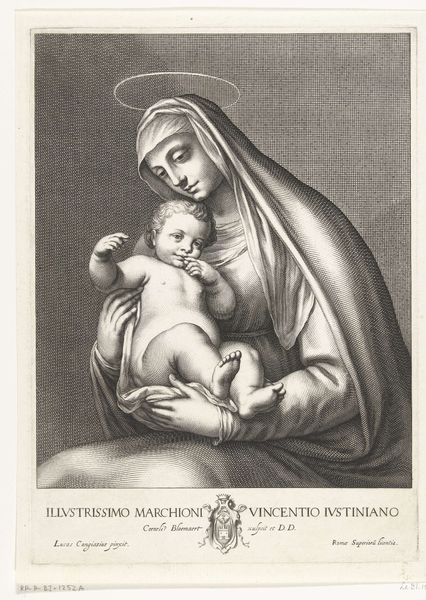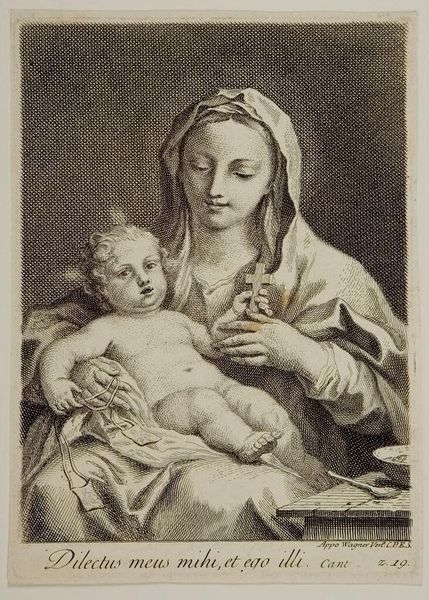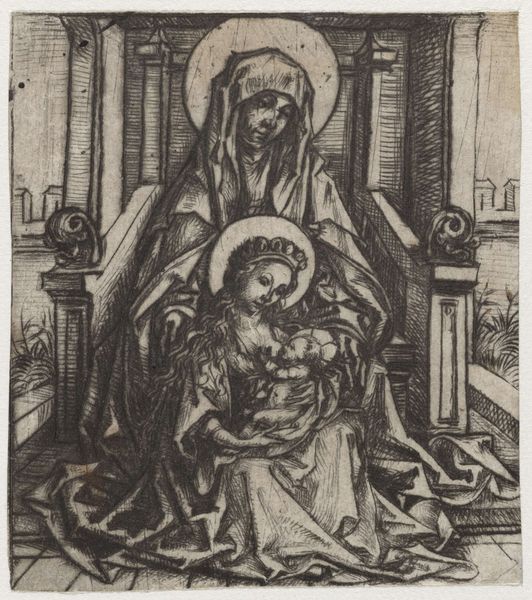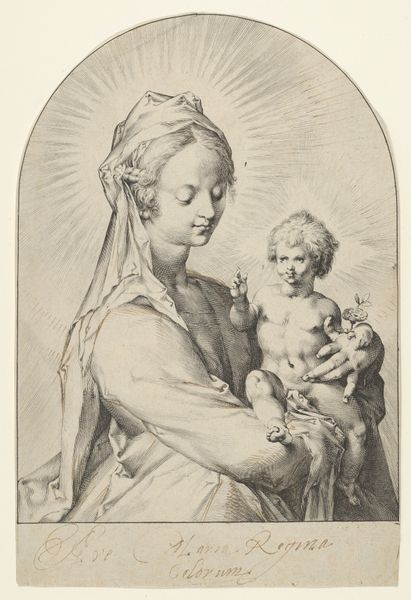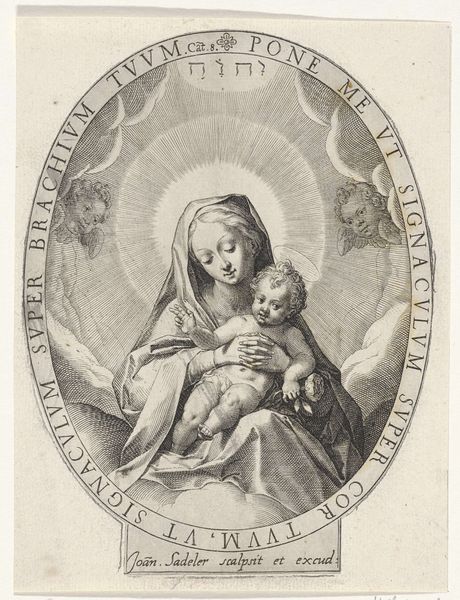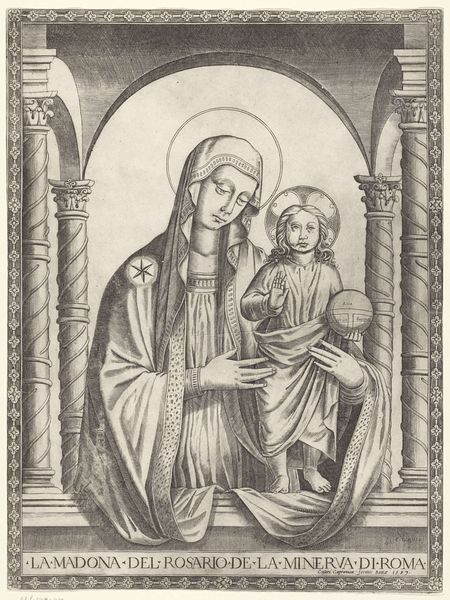
drawing, print, paper, engraving
#
portrait
#
drawing
#
baroque
# print
#
caricature
#
figuration
#
paper
#
engraving
Dimensions: 90 × 60 mm
Copyright: Public Domain
Curator: Standing before us is an engraving entitled "Virgin and Child" by Jean Valdor. Although it's undated, the stylistic features place it firmly within the Baroque tradition. Editor: There’s something stark about the contrasts. The bright halo radiates powerfully from the subjects, framing their figures and pulling them forward. Curator: Engravings such as this one served an important role. Disseminating religious imagery through printmaking allowed for widespread access, essentially democratizing art and religious icons for a broader public. It offered the less affluent an intimate image of veneration within the domestic sphere. Editor: Observe how the texture is meticulously crafted through cross-hatching. The density creates volume. There's something almost sculptural about the way the Madonna’s drapery falls. Even the light catches and illuminates in ways similar to that of Baroque sculpture. Curator: It's worth considering how access to art impacted individual religious practices. Before mass media, these images were incredibly powerful tools for shaping belief and behavior within specific social frameworks. Editor: Yet the focal point—Mary’s gaze—is internal and distant, directed neither to us as viewers nor particularly to her son, adding a layer of somberness. The contrast in how Mary and Jesus hold the Rosary is remarkable. Curator: The text included along the bottom elevates Mary in a very specific way: a maternal conduit for both love and access to eternity. Note, it includes "With grace and Privilege of the Most Serene Prince", and while not surprising, these early modern religious prints helped both religion and monarchy secure their socio-political position. Editor: This examination clarifies my initial impression. Despite the small scale, it masterfully evokes the complex interplay between light, form, and devotion. Curator: Precisely. This work reminds us that art is not created, circulated, or interpreted within a vacuum. Examining Valdor’s "Virgin and Child" reveals layers of social and cultural narratives, accessible for all to ponder.
Comments
No comments
Be the first to comment and join the conversation on the ultimate creative platform.
